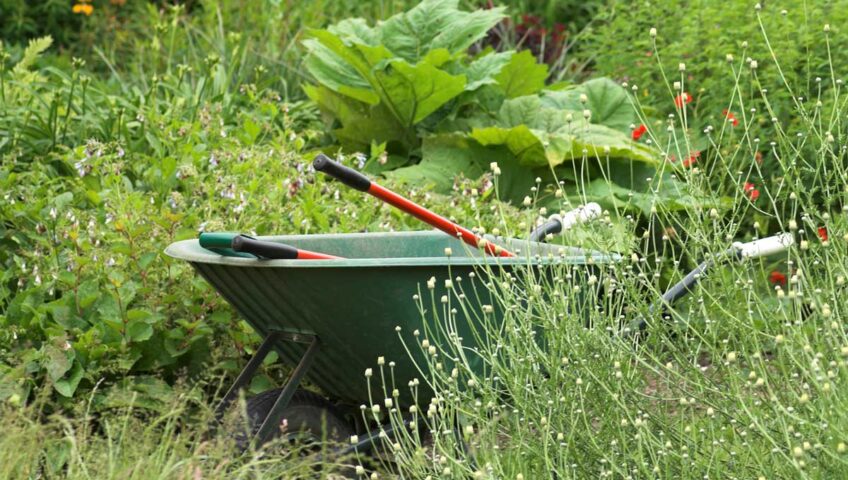Now that temperatures are finally rising and spring is in the air, it’s time to consider completing some spring cleaning tasks for your yard. Yards that are left unkempt not only look unsightly, but they also aren’t able to maximize their growing potential throughout the season. We’ve come up with a spring yard cleanup checklist to help you get your yard nice and tidy in time for spring and summer outdoor activities.
- Check for lawn damage and prep for reseeding.
While your grass can withstand cold winter temperatures while hibernating, sometimes you’ll end up with damage from traffic, road salt, or disease. Prepare to reseed damaged areas by removing dead areas with a heavy square metal rake. Then, apply a ¼ layer of compost to help give seeds a jump-start when it is time for planting.
- Prune dead and damaged branches on shrubs and trees.
Any branches that have been damaged by winter weather should be trimmed back to keep your shrubs and trees happy and healthy throughout the growing season. If you have hedges, use hand shears to shape them as electric shears can cause damage that prevent the hedge from being able to grow a nice thick outer layer. Prune summer-flowering shrubs, such as Rose of Sharon, before buds swell, but wait to prune spring bloomers, like forsythia, until after they flower.
- Cut back and divide your perennial plants.
To start, prune flowering perennials to a height of 4 to 5 inches and ornamental grasses to 2 to 3 inches. This helps to encourage vigorous new growth. As soon as the ground has thawed, it is safe to dig up perennials to thin your beds or transplant them to other areas of your yard. Make sure to leave at least three stems per clump. Cut back any rose canes that have been damaged to about 1 inch below any blackened areas.
- Clean up fallen leaves and debris.
All leaves, dead foliage, or remaining dead annuals should be cleaned up and removed from your yard. Now is also a good time to remove any mulch that you plan to replace, which also allows you to see heaved plants that need to be tamped back into the ground.
- Start your compost pile.
If you choose to compost your yard waste, now is the time to start your new compost pile with the debris and old mulch that you’ve collected from around your yard. Shred leaves and chip branches over ½ inch in diameter if you can, or add a bagged compost starter to give the pile a boost. Make sure to keep it evenly damp, and aerate it with a pitchfork every two weeks.
- Tidy up paths and patios.
If any decorative gravel has moved out of its boundaries during the winter, now is the time to rake it back to where it belongs. Order more gravel to fill any areas that are thin or bare. Remove any pavers that have been heaved by winter freezes, tamp down and add base material as needed to get it back to level. If you have flagstones, refill joints with new sand or stone dust as needed.
- Replace or repaint wood fences and trellises.
Start by checking that all posts are still securely in the ground, then remove any badly damaged pickets, boards, or lattices. Next, scrape off any loose old paint and sand smooth for the best results. Install new wood and perform any required patching with wood epoxy. Once temperatures are above 50 degrees, you can apply your new paint.
We hope this checklist has helped inspire you to get your yard back in shape this spring. If you simply don’t have the time or the patience to do your spring yard cleanup, we offer many different services to meet your needs. Give us a call to set up a free estimate today!

